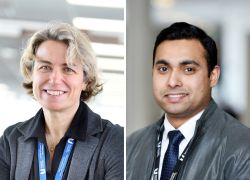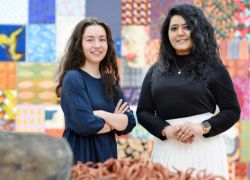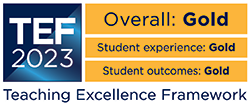Teesside academic's research referenced by NASA
NASA has referenced pioneering research by a Teesside University academic as part of its investigations into how astronauts adapt to unusual sensory conditions, such as the switch between gravity and weightlessness.
Daniel Eaves’ original research focused on whether running on a treadmill in front of different visual images, such as a mirror or a reversed mirror image, influences the physical demands of the exercise. And now NASA has used those findings as part of their work to investigate how astronauts adapt to different conditions.
The Senior Lecturer in Sport and Exercise Science at Teesside University worked on the treadmill running research with Nicola Hodges, from The University of British Columbia in Canada and Mark Williams from Brunel University. Daniel was the main author of the study, which was published in 2008 in the highly-regarded journal Medicine & Science in Sports & Exercise.
And while their research findings generated widespread interest at the time, featuring in the national media, NASA's interest is more recent.
Daniel said: 'When astronauts switch from normal to distorted sensory conditions, such as from gravity to weightlessness or vice versa, their metabolic demands rise due to the extra effort involved in 'getting used to' the new conditions.
'Of course, this is a major issue when oxygen is at a premium in space. Therefore, the quicker you can adapt to distorted sensory conditions the better, and NASA investigate this in their paper.
'NASA referenced our paper as we showed higher metabolic, cognitive and movement demands from distorted sensory conditions during treadmill running, compared to running in front of a normal mirror image.
'We also showed that running in front of a mirror in the gym can be less effortful than seeing a static image of yourself, which may be helpful for new exercisers, or not so helpful for those wanting to train harder.'
Daniel said: 'I was pleasantly surprised that NASA picked up on our work. And it is particularly fitting as Saltburn-born NASA astronaut Dr Nicholas Patrick has an honorary Doctor of Science award from Teesside University.'
He added: 'Overall it is interesting and inspiring to see that the research we do here at Teesside University, which investigates how human movements are generated and influenced by external sensory information, can be applied to many different walks of life.'
Daniel’s current research in this area uses brain scanning equipment to investigate how imagining yourself performing a movement while you also watch a movement demonstration can enhance movement rehabilitation, for example in injured athletes or stroke victims.
He said: 'It's important that our students get hands on experience of inter-disciplinary research like this in our labs, and that this later guides the work of practitioners in the field - even if this is in space!'
 Teesside University academics join prestigious network of
...
Teesside University academics join prestigious network of
... Curatorial studies culminating with international art
...
Curatorial studies culminating with international art
... Teesside animation graduates receive top regional Royal
...
Teesside animation graduates receive top regional Royal
...